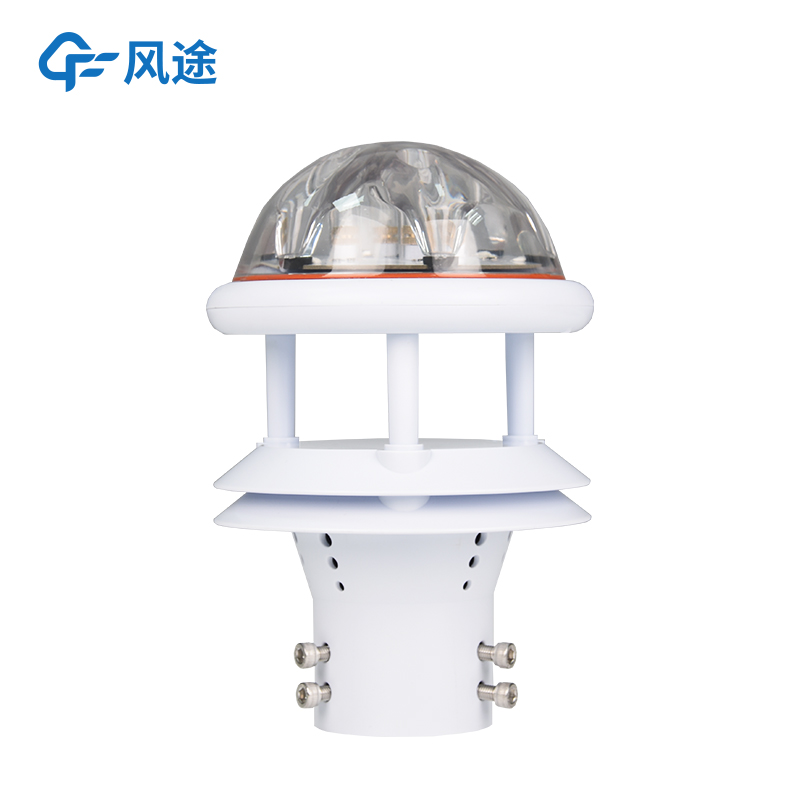Shandong Fengtu IOT Technology Co., Ltd
Sales Manager:Ms. Emily Wang
Cel,Whatsapp,Wechat:+86 15898932201
Email:info@fengtutec.com
Add:No. 155 Optoelectronic Industry Accelerator, Gaoxin District, Weifang, Shandong, China

Sales Manager:Ms. Emily Wang
Cel,Whatsapp,Wechat:+86 15898932201
Email:info@fengtutec.com
Add:No. 155 Optoelectronic Industry Accelerator, Gaoxin District, Weifang, Shandong, China
time:2025-01-21 09:40:05 source:Weather Station viewed:488 time
Measuring rainfall is an important task in fields such as meteorological research, disaster early warning, hydrological monitoring, and agricultural management. Here are three common types of rain gauges.
1. Radar Precipitation Sensor Rain Gauge Distrometer
The Radar Precipitation Sensor Rain Gauge Distrometer utilizes 24GHz Doppler radar wave technology. By measuring the fall velocity and particle size of precipitation droplets, it can distinguish between types of rain, snow, and hail, as well as the rainfall intensity.
Measuring Range: 0 - 200 mm/hour.
Measurement Accuracy: 5% (when wind speed is less than 5 m/s).
No Mechanical Components: There are no moving parts inside, requiring almost no maintenance.
Low Power Consumption: Power consumption is less than 2W.
Application Scenarios: Widely used in weather stations, smart city systems, and river flood prevention monitoring.
2. Piezoelectric Rain Gauge
The piezoelectric rain gauge makes use of the piezoelectric effect. It converts the pressure changes generated by raindrops hitting the sensor surface into electrical signals to measure rainfall.
Measurement Accuracy: Up to ±4%, with a resolution of 0.01 mm.
Fast Response Speed: Capable of quickly responding to precipitation changes.
Maintenance - Free: It has a compact structure and is easy to install and maintain.
Application Scenarios: Suitable for meteorological observation, hydrological research, and urban rainstorm monitoring.
The Optical Rain Gauge measures rainfall based on optical principles. It uses the scattering and absorption effects of light beams when passing through air with raindrops to detect the presence of raindrops.
Continuous Real - Time Monitoring: It can continuously monitor rainfall in real - time without being affected by the external environment.
Real - Time Data Collection: It adopts interruption technology to ensure the timeliness and accuracy of data.
Application Scenarios: Widely used in meteorology, agriculture, and hydrological monitoring.
In conclusion, these three types of rain gauges each have their own advantages and disadvantages and are suitable for different application scenarios. The Radar Precipitation Sensor Rain Gauge Distrometer is suitable for high - precision and multi - type precipitation monitoring; the piezoelectric rain gauge is suitable for scenarios requiring fast response and low maintenance; and the Optical Rain Gauge performs well in complex meteorological environments. When choosing a suitable rain gauge, factors such as accuracy, maintenance cost, and environmental adaptability need to be considered according to specific requirements.

A meteorological and environmental monitoring system is an integrated system of equipment and software for monitoring and recording changes in atmospheric and environmental parameters. It monitors and records data on meteorological elements, environmental pollutants, etc. in real time for meteorolog...
As a specialized rainfall monitoring instrument and equipment, rainfall monitoring station can be known to play a pivotal role in people's production and life. The amount of rainfall in different seasons has an impact on travel. We know that crops cannot be grown without water from sowing to ger...
The five elements micro meteorological instrument is a practical meteorological observation tool, which has the ability to simultaneously monitor the five core meteorological parameters: wind speed, wind direction, temperature, humidity and atmospheric pressure. The device provides real-time informa...
What are the benefits of installing a regional automatic weather station? A regional automatic weather station can realize the functions of collecting, processing and storing weather data, playing an important role in weather analysis and providing a reliable basis for local weather warning. It has...